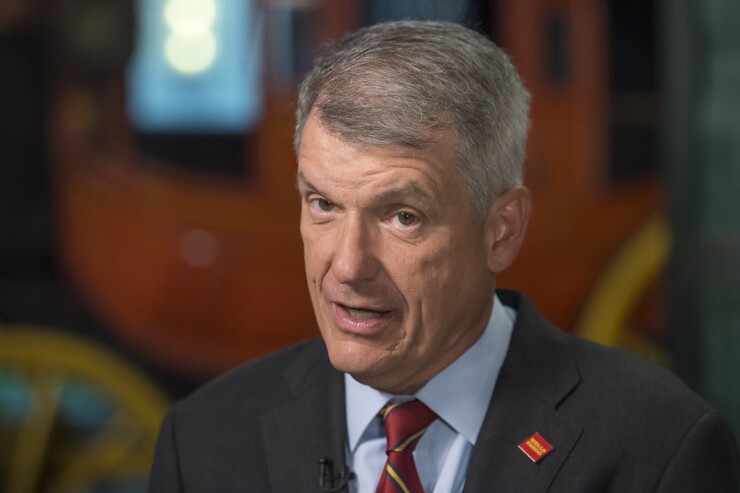Expect more bad news from Wells Fargo in the coming months.
Speaking at an investor conference in New York Tuesday morning, CEO Tim Sloan signaled that the company could uncover more examples of financial harm to its customers as part of an ongoing internal review of its sales practices.
“While we work to rebuild trust and make things right for our customers, we will be reporting more progress in the months ahead that no doubt will result in additional headlines,” Sloan said.
Sloan’s comments came almost a year to the day after Wells agreed to pay nearly $190 million to settle charges that more than 5,000 employees opened over 2 million unauthorized accounts in order to meet sales goals and collect bonus pay. Following a third-party review,
The questionable sales practice extended beyond the retail bank. In July, Wells revealed that it charged more than half a million customers for auto

During the presentation, Sloan said that with the third-party review now completed, Wells is focused on providing refunds to customers for unauthorized charges on their accounts. It has also
Still, while the
“I think when you look at the challenges that we had in the company, the mistakes that we made, I would attribute those much more to a some business model failures, operational risk oversight and some poor management of those issues as opposed to a fundamental break in the Wells Fargo culture,” Sloan said at the conference, which was sponsored by Barclays.
During the presentation, Sloan also offered a note of caution for the company’s third-quarter results, which it will report early next month.
Loan growth will likely be tempered by ongoing efforts to pull back in auto lending, amid concerns that consumers are becoming overextended. Additionally, a “slower and more competitive” environment for commercial and commercial real estate lending will also affect overall growth, Sloan said.
Third-party expenses related to the sales-practice scandal will “remain elevated” in the third quarter, and will likely decline toward the end of the year, Sloan said. He also said Wells
Wells expects to reduce costs in the year ahead by centralizing its business structure, closing branches and reducing travel-related costs, among other initiatives, according to Sloan.
“Our efficiency ratio was 61.9% in the first half of the year, which is too high,” he said.





